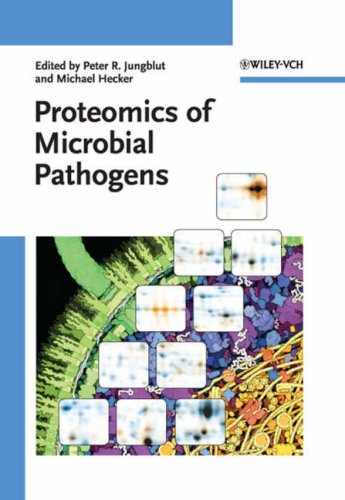

Most ebook files are in PDF format, so you can easily read them using various software such as Foxit Reader or directly on the Google Chrome browser.
Some ebook files are released by publishers in other formats such as .awz, .mobi, .epub, .fb2, etc. You may need to install specific software to read these formats on mobile/PC, such as Calibre.
Please read the tutorial at this link. https://ebooknice.com/page/post?id=faq
We offer FREE conversion to the popular formats you request; however, this may take some time. Therefore, right after payment, please email us, and we will try to provide the service as quickly as possible.
For some exceptional file formats or broken links (if any), please refrain from opening any disputes. Instead, email us first, and we will try to assist within a maximum of 6 hours.
EbookNice Team

Status:
Available4.5
6 reviews
ISBN 10: 3527317597
ISBN 13: 9783527317592
Author: Peter R. Jungblut, Michael Hecker
Peter R. Jungblut is the head of the Department of Protein Analysis, as a core facility of the Max-Planck-Institute for Infection Biology in Berlin, Germany, coordinating all proteomics activities of the institute. By classical proteome analysis, his group generated a proteomic database with about 1500 identified proteins of microorganisms, eucaryotic cells and tissues. He has published more than 130 scientific articles on proteomics.
Michael Hecker is a biologist and became Professor in 1986 at the Ernst-Moritz-Arnd University in Greifswald, where he is also director of the Department for Microbial Physiology and Molecular Biology. He is a member of the Leopoldina, a fellow of the American Academy of Microbiology, as well as member of numerous scientific societies and academic bodies. In 2005 he was elected as the Vice Chair of the International Union of Microbiological Societies. He has published more than 300 scientific articles.
1. Proteomics of microbial pathogens
2. Genome and proteome analysis of Chlamydia
3. Helicobacter pylori vaccine development based on combined subproteome analysis
4. A comprehensive proteome map of growing Bacillus subtilis cells
5. A targeted proteomics approach to the rapid identification of bacterial cell mixtures by matrix-assisted laser desorption/ionization mass spectrometry
6. Proteome analysis of Neisseria meningitidis serogroup A
7. Protein identification and tracking in two-dimensional electrophoretic gels by minimal protein identifiers
8. Continued proteomic analysis of Mycobacterium leprae subcellular fractions
9. CFP10 discriminates between nonacetylated and acetylated ESAT-6 of Mycobacterium tuberculosis by differential interaction
10. The Helicobacter pylori CagA protein induces tyrosine dephosphorylation of ezrin
11. Action and Reaction: Chlamydophila pneumoniae proteome alteration in a persistent infection induced by iron deficiency
12. Assessment of protein spot components applying correspondence analysis for peptide mass fingerprint data
13. Presentation of differentially regulated proteins within a web-accessible proteome database system of microorganisms
14. The cell wall subproteome of Listeria monocytogenes
15. Low virulent strains of Candida albicans: Unravelling the antigens for a future vaccine
16. Proteomic analysis of the sarcosine-insoluble outer membrane fraction of the bacterial pathogen Bartonella henselae
17. The influence of agr and B in growth phase dependent regulation of virulence factors in Staphylococcus aureus
18. Comparative proteome analysis of cellular proteins extracted from highly virulent Francisella tularensis ssp. tularensis and less virulent F. tularensis ssp. holarctica and F. tularensis ssp. mediaasiatica
19. Proteome comparison of Vibrio cholerae cultured in aerobic and anaerobic conditions
20. Highly phosphorylated bacterial proteins
21. Induction of Mycobacterium avium proteins upon infection of human macrophages
22. Proteomics-based identification of novel Candida albicans antigens for diagnosis of systemic candidiasis in patients with underlying hematological malignancies
23. Proteome comparison of Vibrio cholerae cultured in aerobic and anaerobic conditions
proteomics of microbial pathogens
proteomics microbiome
microbial proteomics
proteomics msu
proteomics biotechnology
Tags: Peter Jungblut, Michael Hecker, Proteomics of Microbial